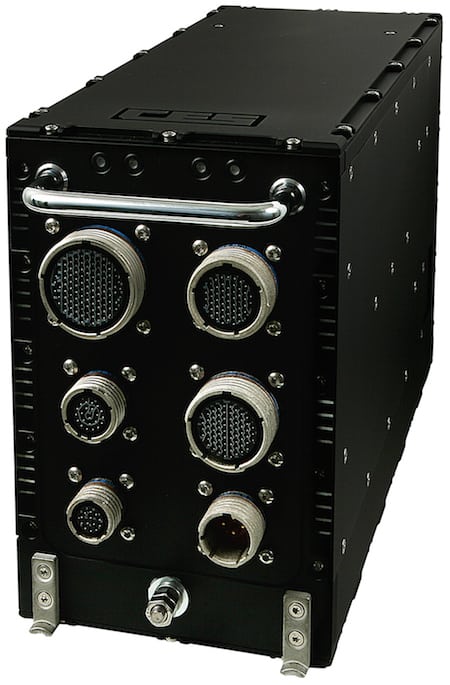
BuiltSafe Rock 2. (Mercury Mission Systems)
As commercial and military aircraft become increasingly reliant upon software to perform safety-critical functionality, the avionics design tools available for engineers at tier 1 OEMs to develop new capabilities are becoming smarter.
During the 2018 Farnborough International Air Show, Avionics spoke with Mercury Mission Systems VP of Engineering Yves Mathys about how they’re supporting the applications being developed for today’s aircraft cockpits and UAS ground stations.
Mercury’s ROCK-2 avionics subsystem applications suite uses Intel multicore processors; What is the supporting aircraft application development like?
We introduced the BuiltSAFE ROCK-2 years ago with a focus on safety-critical requirements and now we’re increasingly moving into higher-level safety requirements. We use Intel multicore processors for the development of less-critical applications for mission computers, and we also feature safety certified processors for applications that require safety certification.
We’re able to run very high critical functions up to DAL A and lower functions with Intel on the same mission computer, and we do this with strict and formal segregation of hardware and software into the architectures. The connections between the safety world and non-safety world enable the customer to run applications such as digital maps where there is less critical functionality and still obtain connectivity into the aircraft.
What type of applications are avionics design engineers developing with ROCK-2?
We have several fully certified systems flying today. Many of the current applications that are flying were developed with ROCK-2 link sensors to the cockpit. We’re also enabling video-switching and processing of flight information to meet multiple DAL levels on the sensors and the cockpit. Another application that is flying today is command and control. We also have a number of new subsystem customers, one system doing more with video mixers and on-screen display capabilities.
We’re also helping with the deployment of ground stations for UAVs and the high-level safety requirements that exist there. While those require less I/O (input/output), we’re able to take the ROCK-2 and repackage it into a chassis for UAV ground stations. This is an ongoing program that will be deployed and certified between 2019 and 2020.
Are there any trends you’re increasingly seeing in terms of what ROCK-2 is being used to develop with an eye toward the future?
The main targets are tactical digital map systems (TDMS), image processing and command and control.
We’re also seeing traction in the development of machine learning and artificial intelligence, such as semantic objects, emergency landing spots for rotary-wing platforms or sense and avoid.
What segments of the market are developing what types of applications?
On the military side, the biggest common use has been for TDMS and on the commercial side, the focus has been on more command and control functionality.
How has Mercury’s support of OEM engineers expanded in recent years?
Mercury has grown from an embedded computing provider around radar processing to now supporting what we call the entire sensor processing chain. If you think about it from the path of a sensor or signal up from the front end from an acquisition perspective to the back end from a mission computing perspective, that’s like the DNA of the company so to speak.
We also entered the mission computing market with the acquisition of creative electronic systems (CES)—that’s our footprint in Geneva. It’s an important segment of the market, and we want to continue to grow it.
This interview has been edited for length and content.